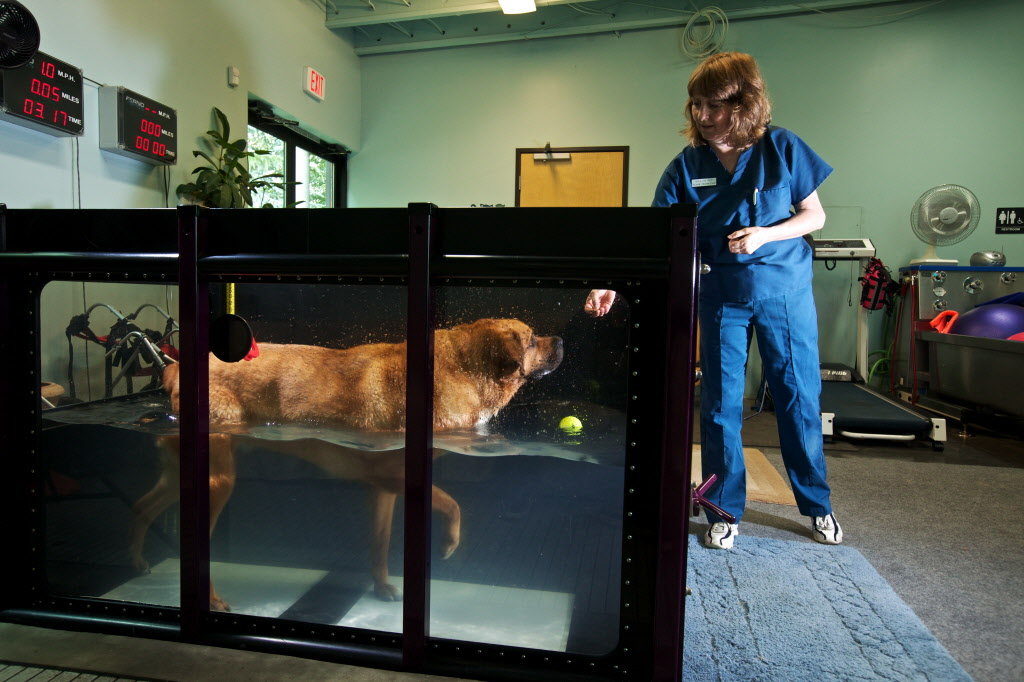Physical therapy for dogs is available to help your pet recover whether your dog is old and suffering from arthritis or an injured younger dog or even a puppy. Your veterinarian will recommend the best time for your dog to undergo rehabilitation.
Some of the common canine conditions treated by physical therapy are hip dysplasia, hip surgery, low back problems, stroke, neurological disorders and obesity or weight control.
A common method of physical therapy for dogs is pool therapy, which involves water exercises to strengthen different muscles with less stress on the joints and muscle soreness. The main advantage of pool therapy is water buoyancy, which reduces the force of gravity and therefore the impact of the exercises on muscles and joints. This allows physical therapy for dogs to start almost immediately after injury or surgery with longer exercise sessions, helping injured dogs recover faster. Examples of exercises done under water are weight-bearing or resistance exercises, treadmill exercises, and range-of-motion exercises.
In addition to exercise programs, physical therapy for dogs may also include manual techniques such as myofascial release and joint mobilization as well as massage. The benefits of massage to humans are the same for dogs. Massage increases blood circulation, relieves stress and reduces muscle tension, among other known benefits.
Other methods of physical therapy for dogs are ultrasound therapy, electrical stimulation or electrotherapy, often used to treat muscle disorders, and light therapy, which enhances immune and lymphatic processes, improves circulation, minimizes inflammation, heals wounds, and reduces scarring.
Just like human patients, physical therapy for dogs starts with the therapist’s evaluation followed by a series of therapy sessions. The length of physical therapy for dogs varies depending on the dog’s condition. Some cases require once a week therapy sessions while the more extensive programs may require three sessions each week for several weeks. Physical therapy for dogs lasts until the dog’s has completely recovered or the owner is satisfied with the dog’s improvement.
You will find many individuals who offer physical therapy for dogs. A qualified animal therapist should have completed an accredited certificate program such as the one offered by the Animal Rehabilitation Institute which includes the study of canine anatomy and physiology, management of orthopedic conditions and neurological disorders in dogs, physical therapy rehabilitation techniques and modalities, among others.
Before you put your pet in the hands of a therapist, always make sure that person has received the proper education and training in animal or canine rehabilitation.












Be First to Comment